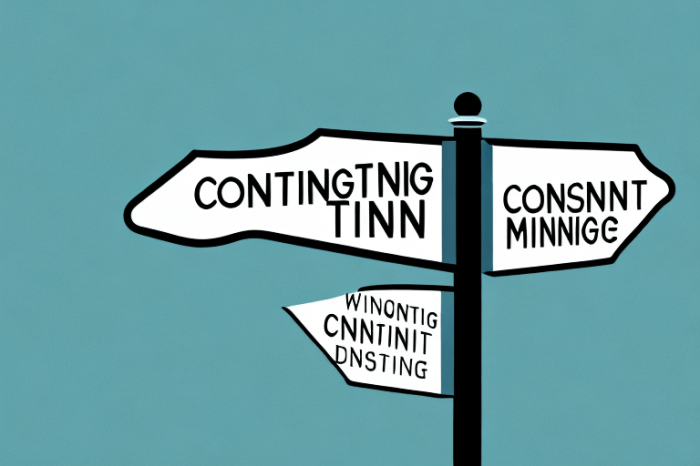Building a Content Marketing Roadmap takes center stage, inviting readers into a world of strategic planning and creative execution. Get ready to dive into the essentials of creating a roadmap that drives business growth and engagement.
Let’s break down the key steps involved in developing a successful content marketing strategy that resonates with your target audience.
Understanding Content Marketing Roadmaps
Content marketing roadmaps serve as strategic plans outlining the key steps and milestones needed to achieve marketing goals. They provide a structured approach to content creation, distribution, and promotion, helping businesses stay organized and focused on their objectives.
Components of a Content Marketing Roadmap
- Target Audience Analysis: Understanding the demographics, preferences, and behaviors of the target audience.
- Content Goals: Defining specific objectives such as brand awareness, lead generation, or customer retention.
- Content Calendar: Planning the creation and publication of content across different channels and platforms.
- Research: Identifying relevant s to optimize content for search engines.
- Distribution Channels: Determining the best channels to reach the target audience, such as social media, email, or blogs.
- Performance Metrics: Establishing key performance indicators (KPIs) to measure the success of content marketing efforts.
Having a well-defined content marketing roadmap is crucial for businesses to align their content strategy with overall marketing objectives, ensure consistency in messaging, and track the effectiveness of their campaigns.
Developing a Content Strategy: Building A Content Marketing Roadmap

Creating a solid content strategy is essential in building a successful content marketing roadmap. This involves outlining the goals, target audience, key messages, and tactics to achieve those goals. Here’s how you can develop a content strategy within your roadmap:
Aligning Content Strategy with Business Goals
To align your content strategy with overall business goals, start by clearly defining your business objectives. Understand what you want to achieve through your content marketing efforts and how it aligns with the broader goals of the company. Your content strategy should directly support these goals and help drive the desired outcomes.
- Identify key performance indicators (KPIs) that align with your business objectives.
- Ensure that your content addresses the pain points and interests of your target audience while also promoting your products or services.
- Regularly review and adjust your content strategy to ensure it remains in line with changing business goals and market trends.
Selecting the Right Content Channels and Formats
Choosing the appropriate content channels and formats is crucial for the success of your content strategy. Consider the preferences of your target audience, the nature of your content, and the goals you aim to achieve. Here are some tips for selecting the right content channels and formats:
- Research where your target audience spends their time online and tailor your content distribution accordingly.
- Experiment with different content formats such as blog posts, videos, infographics, podcasts, and social media posts to determine what resonates best with your audience.
- Consider the specific goals of each piece of content when selecting the channel and format to ensure maximum impact and engagement.
Audience Research and Persona Development

In order to create a successful content marketing roadmap, it is essential to conduct thorough audience research and develop accurate buyer personas. This step is crucial as it helps in understanding the needs, preferences, and behaviors of your target audience, allowing you to tailor your content to meet their specific requirements.
Methods for Conducting Audience Research, Building a Content Marketing Roadmap
- Utilize analytics tools to gather data on website visitors, social media followers, and email subscribers.
- Conduct surveys and interviews to directly gather insights from your audience.
- Monitor social media interactions and engagement to understand what content resonates with your audience.
- Utilize research to identify common search queries and topics of interest.
Role of Buyer Personas in Content Creation
Buyer personas are fictional representations of your ideal customers based on real data and research. They help in humanizing your target audience and guiding content creation strategies.
- Persona development influences the tone, style, and messaging of your content to resonate with specific audience segments.
- It helps in identifying the most effective channels for content distribution based on where your personas spend their time online.
- By understanding the pain points and motivations of your personas, you can create content that addresses their needs and provides valuable solutions.
Content Creation and Distribution
Creating high-quality content and effectively distributing it are crucial components of a successful content marketing strategy. Let’s dive into best practices for content creation and distribution to maximize reach and engagement.
Creating High-Quality Content
- Start by understanding your audience: Conduct thorough research to identify their needs, preferences, and pain points.
- Focus on providing value: Create content that educates, entertains, or solves a problem for your target audience.
- Maintain consistency: Develop a content calendar to ensure a steady flow of relevant and engaging content.
- Optimize for : Use relevant s and optimize meta tags to improve search engine visibility.
- Incorporate visuals: Use images, videos, infographics, and other visual elements to enhance your content and increase engagement.
Effective Content Distribution Strategies
- Utilize social media: Share your content across various social media platforms to reach a wider audience.
- Email marketing: Leverage email campaigns to deliver personalized content directly to your subscribers.
- Collaborate with influencers: Partner with influencers in your industry to amplify your content reach and credibility.
- Guest posting: Contribute content to reputable websites in your niche to expand your reach and establish authority.
- Repurpose content: Transform existing content into different formats such as ebooks, podcasts, or webinars to reach new audiences.
By implementing these content creation and distribution strategies, you can effectively reach your target audience, drive engagement, and ultimately achieve your content marketing goals.












